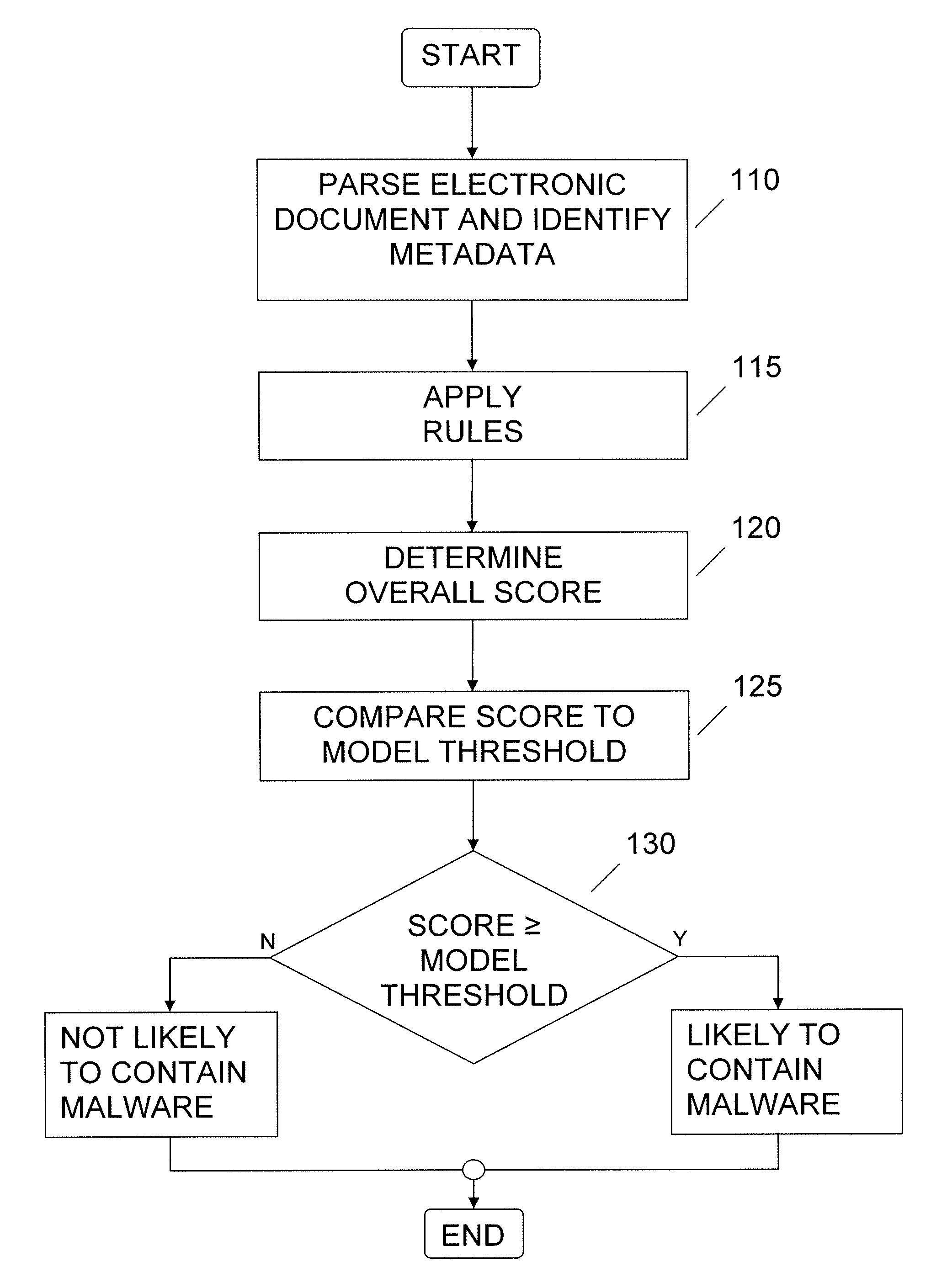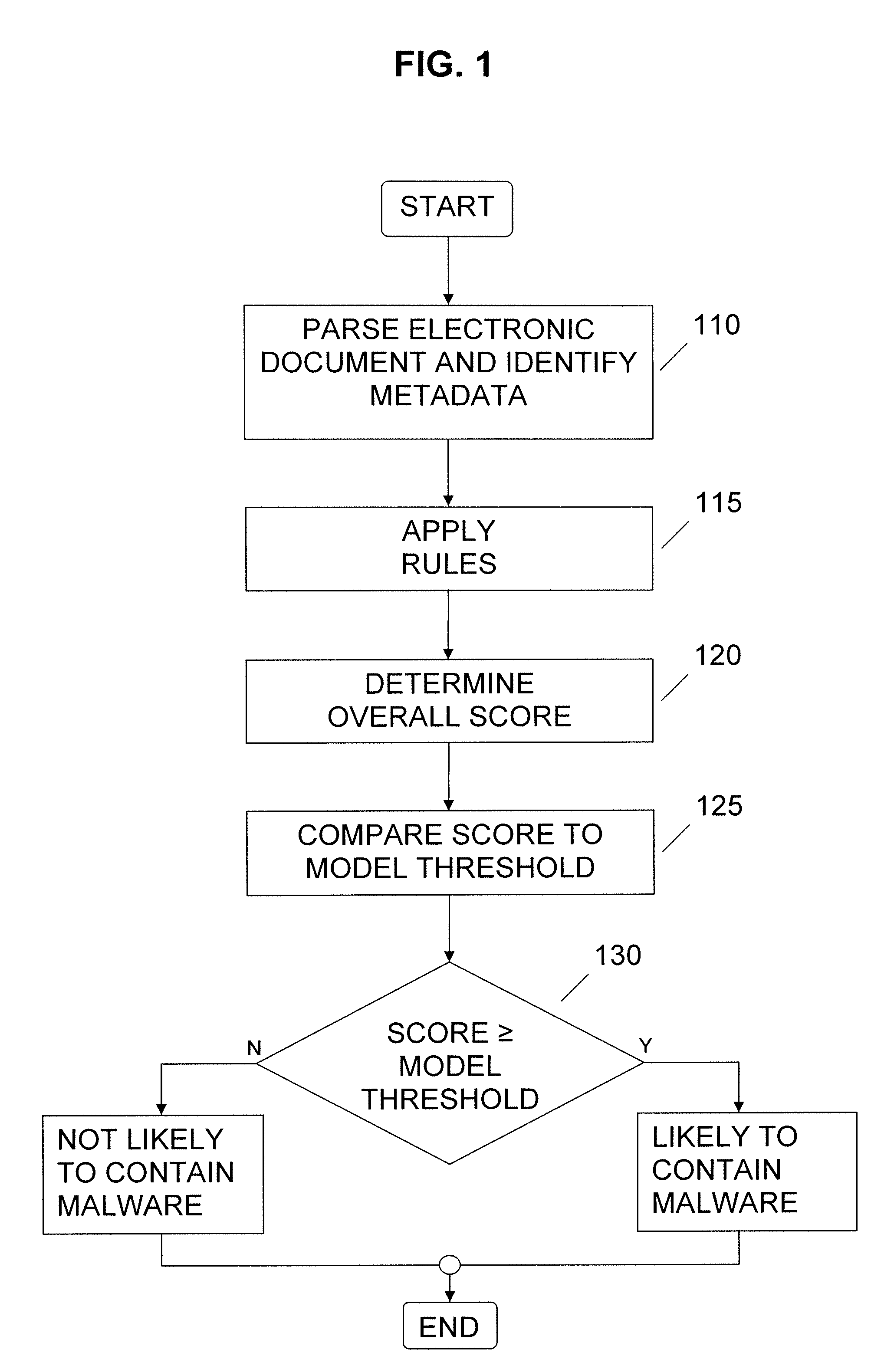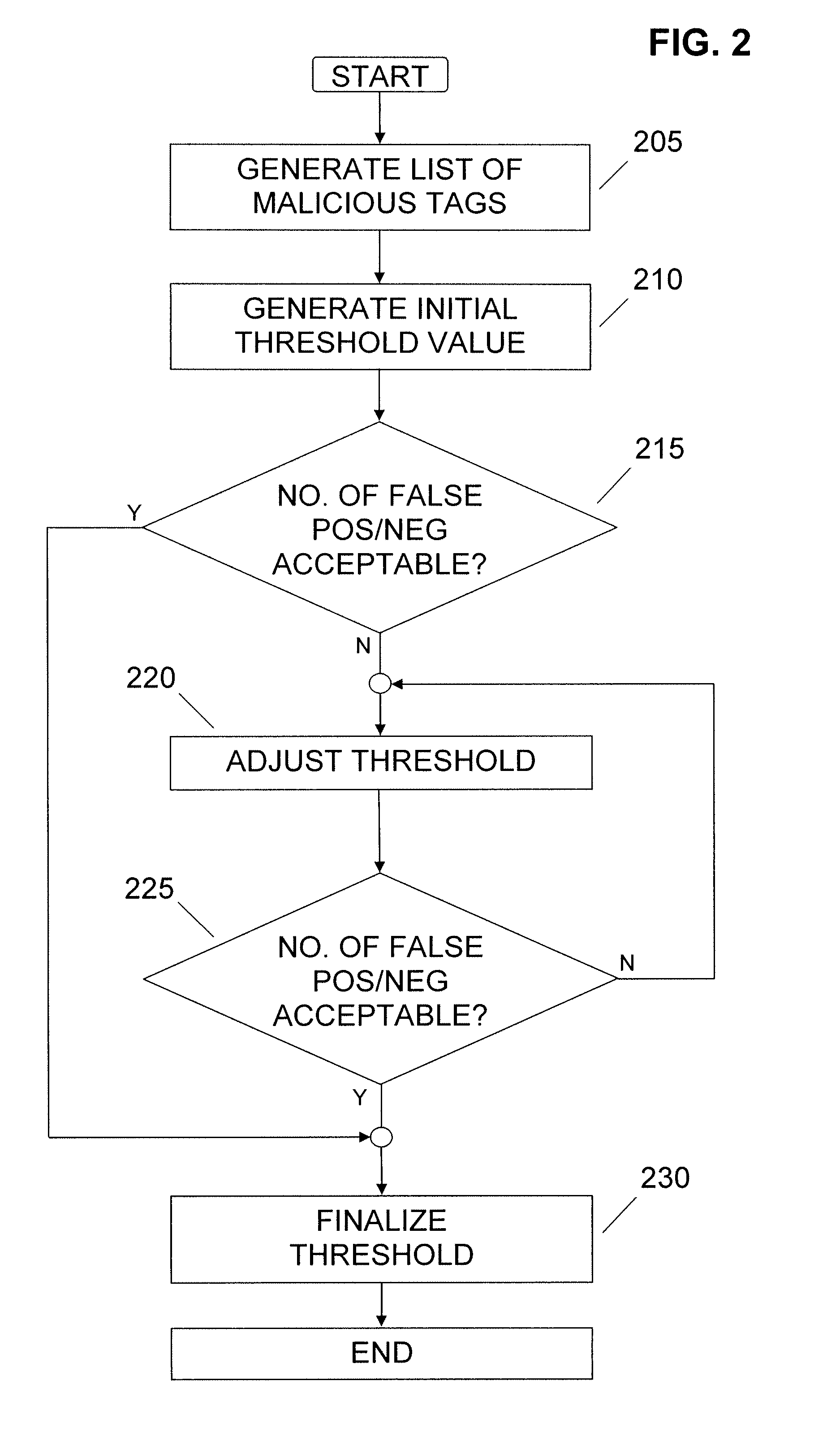Identification of electronic documents that are likely to contain embedded malware
a technology for identifying electronic documents and malware, applied in the field of malware identification, can solve problems such as document not having byte sequences, data loss or damage to equipment, and discarding perfectly safe electronic documents
- Summary
- Abstract
- Description
- Claims
- Application Information
AI Technical Summary
Benefits of technology
Problems solved by technology
Method used
Image
Examples
Embodiment Construction
[0020]It is to be understood that both the foregoing general description and the following detailed description are exemplary. As such, the exemplary methods and other embodiments described herein below are not intended to limit the scope of the present invention. Instead, the scope of the present invention is governed by the scope of the appended claims.
[0021]There is more to an electronic document than what the user sees when the document is printed or rendered on a display screen. If one were to look at the complete physical makeup of an electronic document, regardless of the electronic document format, one would see a collection of data structures. Each of these data structures describes or defines some aspect of the corresponding electronic document. For example, a given data structure may identify an interactive element, such as a hyperlink, embedded in the electronic document. Other data structures may define a specific physical characteristic of the electronic document, such...
PUM
 Login to View More
Login to View More Abstract
Description
Claims
Application Information
 Login to View More
Login to View More - R&D
- Intellectual Property
- Life Sciences
- Materials
- Tech Scout
- Unparalleled Data Quality
- Higher Quality Content
- 60% Fewer Hallucinations
Browse by: Latest US Patents, China's latest patents, Technical Efficacy Thesaurus, Application Domain, Technology Topic, Popular Technical Reports.
© 2025 PatSnap. All rights reserved.Legal|Privacy policy|Modern Slavery Act Transparency Statement|Sitemap|About US| Contact US: help@patsnap.com



